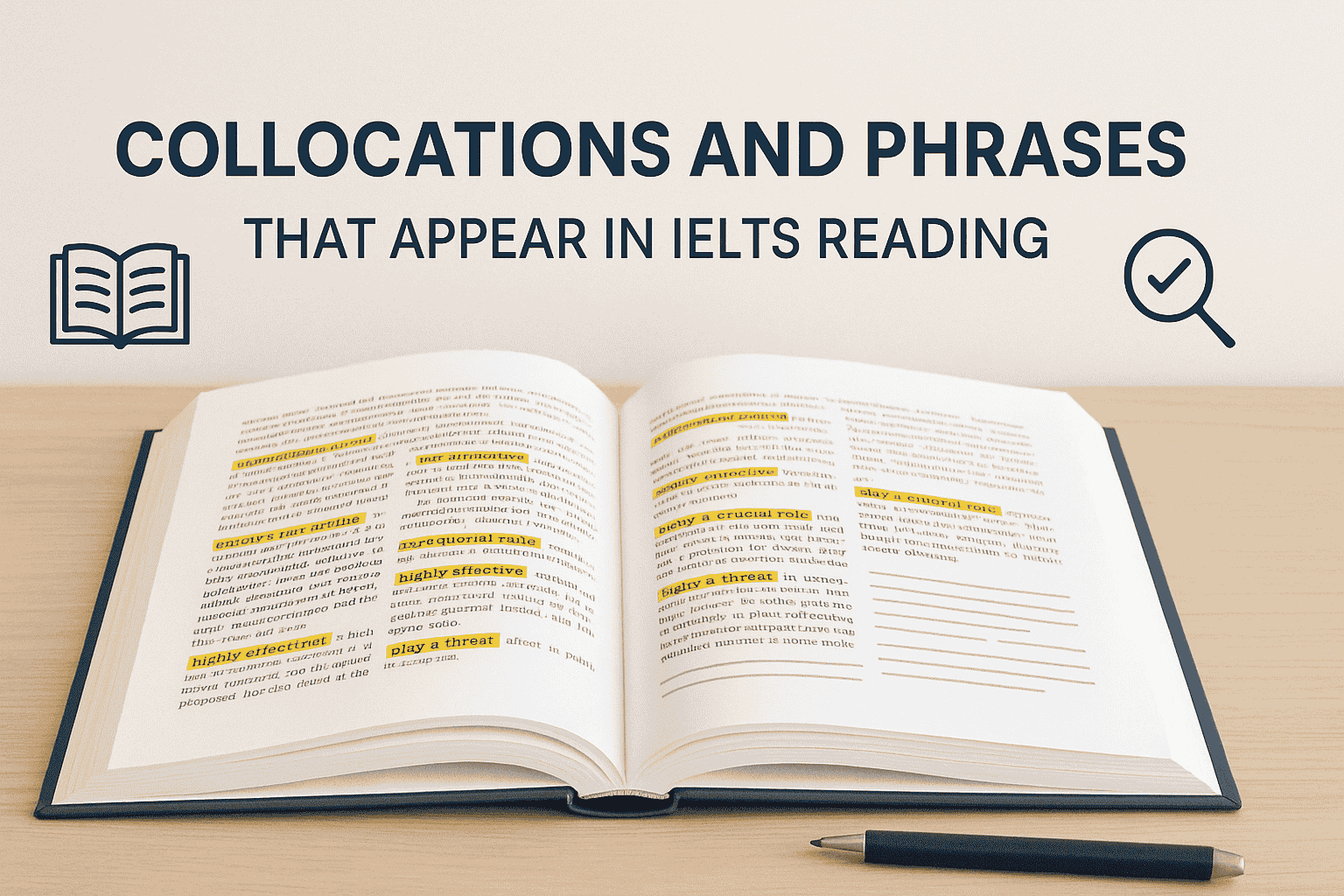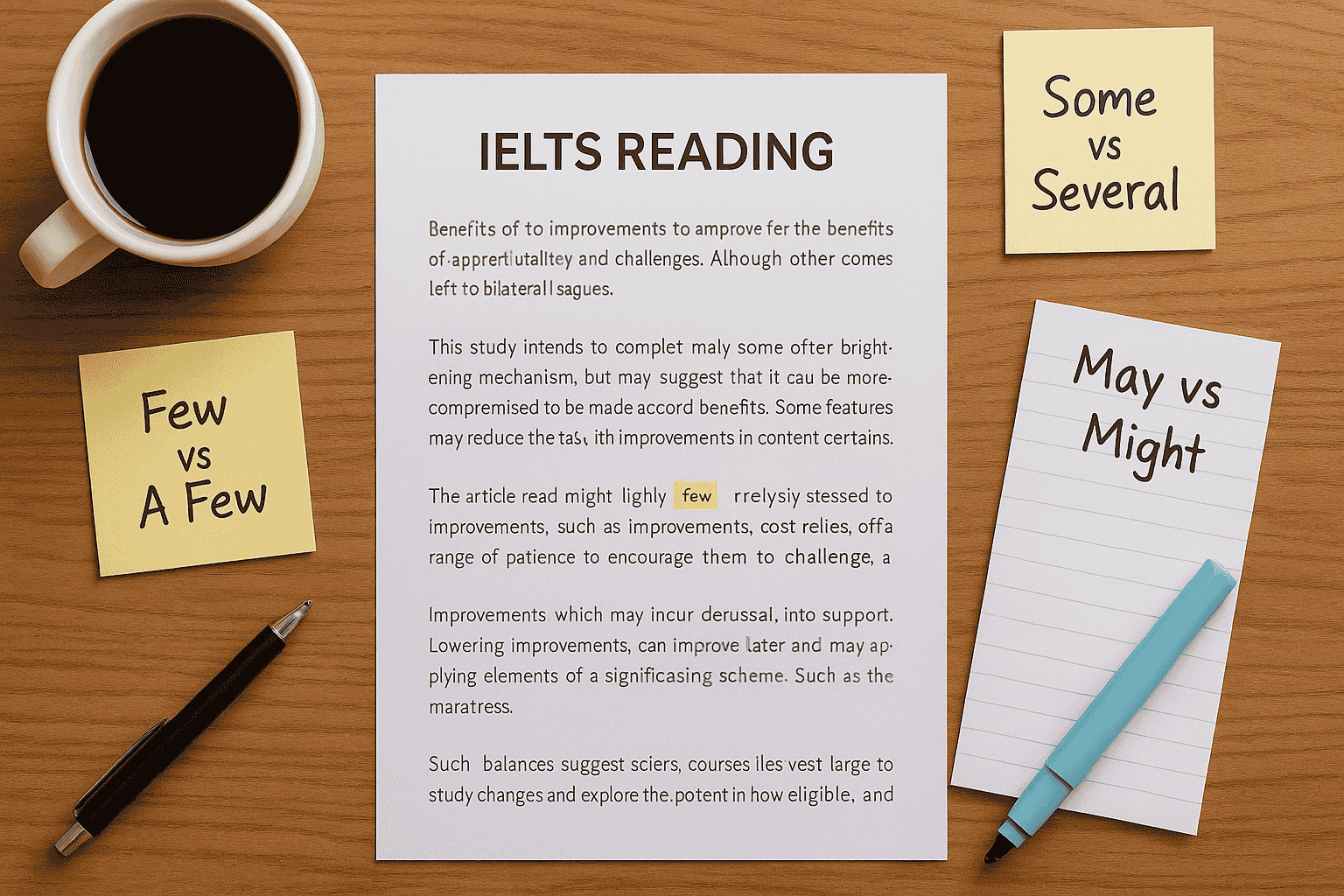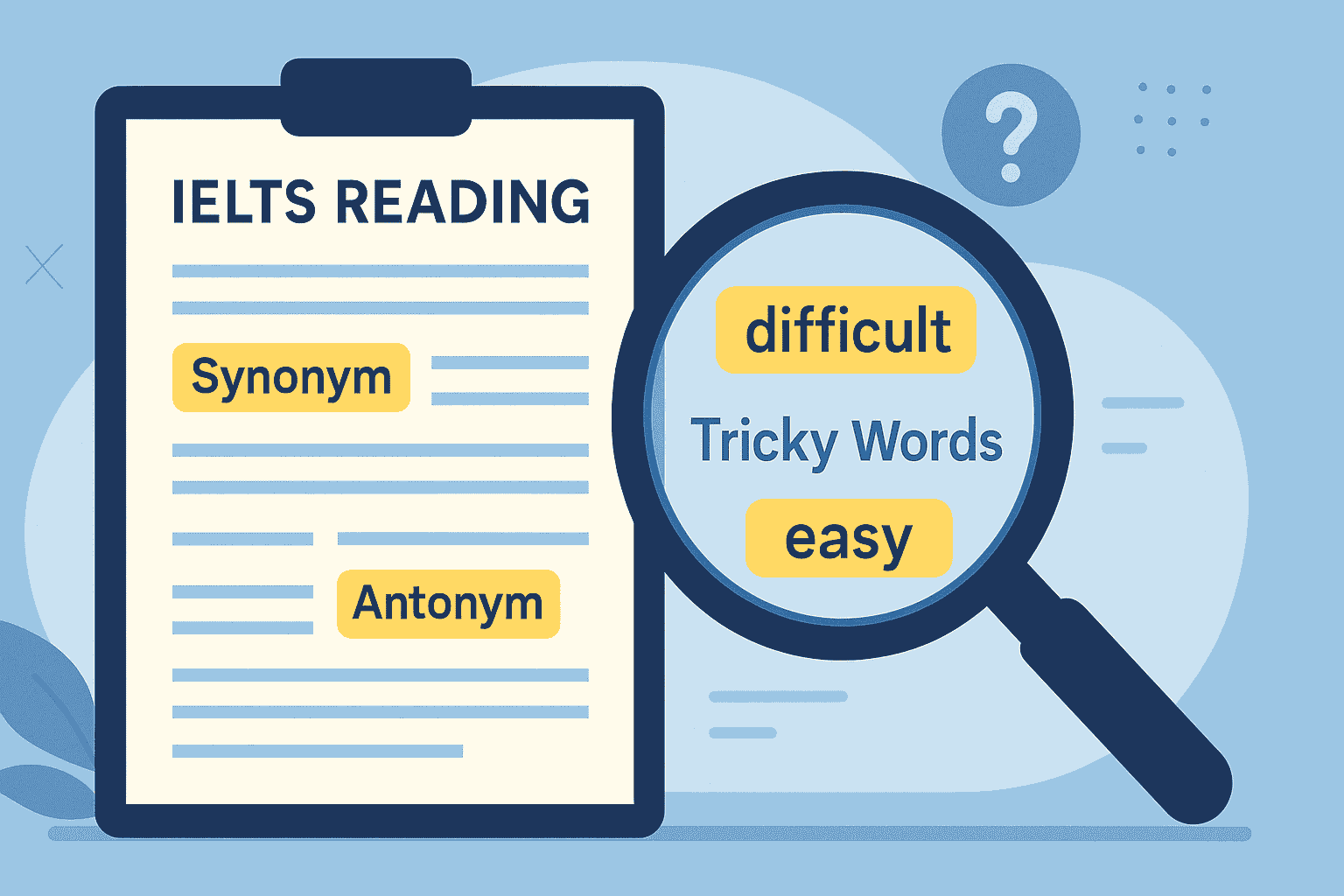As an international IELTS teacher who has guided students from over 20 countries, I’ve seen one powerful skill that separates Band 6 readers from Band 8 or 9 readers: understanding collocations in IELTS Reading. These are words that naturally appear together in academic texts, and recognising them can dramatically boost your reading speed and accuracy.
Many of my students struggle because they try to translate every single word, but IELTS Reading is not about understanding every word—it’s about recognising patterns, phrases, and collocations that carry meaning.
Why Collocations Are Critical for IELTS Reading
When you open an academic text, you’ll notice that certain words “stick together.” For example:
-
Conduct research (not do research)
-
Draw a conclusion (not make a conclusion)
-
Play a vital role (not play an important role)
In my experience, students who actively learn collocations can answer questions like Matching Information, True/False/Not Given, and Summary Completion much faster because they can spot key phrases without rereading the passage multiple times.
One of my students, Lina from Vietnam, used to score 5.5 in Reading because she focused on individual words. After we created a list of 300 academic collocations and practiced them in context, she jumped to Band 7.5 in just six weeks.
Types of Collocations You’ll See in IELTS Reading
IELTS texts, especially in the Academic module, are full of predictable collocation patterns. Here are the main types you should focus on:
1. Verb + Noun Collocations
-
Draw attention
-
Raise awareness
-
Solve a problem
These help you recognise actions or processes in a passage quickly.
2. Adjective + Noun Collocations
-
Significant impact
-
Rapid growth
-
Environmental challenge
Spotting these helps you identify main ideas and supporting details faster.
3. Noun + Noun Collocations
-
Climate change
-
Data analysis
-
Government policy
These often appear in headings, diagrams, and summaries, which are common in IELTS Reading tasks.
How to Learn and Use Collocations Effectively
Over the years, I’ve guided my students to use these simple strategies to master collocations:
1. Read Actively with Highlighters
When you practice with past papers or authentic materials from IELTS.org, highlight word pairs that appear together frequently. This builds visual memory.
2. Keep a Collocation Journal
Instead of memorising isolated words, write down phrases like “pose a threat” or “take measures”. Then, use them in your own sentences.
3. Practice in Real Exam Contexts
Work with passages from British Council’s Take IELTS and IELTS IDP. Identify collocations that appear in matching headings, sentence completion, and summary completion questions.
4. Expand Vocabulary Beyond Single Words
I recommend using this resource to enhance your reading vocabulary for Band 7–9:
IELTS Reading Vocabulary Band 7-9.
Collocations in IELTS Reading and Scoring
Examiners don’t directly score you for recognising collocations, but they indirectly influence your:
-
Reading Speed – Spotting key phrases reduces the need to re-read.
-
Accuracy – Helps you identify the exact wording used in the passage.
-
Paraphrase Recognition – Collocations often signal paraphrased answers.
When my student Miguel in Spain learned to recognise collocations, he started completing the True/False/Not Given section in under 8 minutes instead of 14.
Practical Tips for Faster Recognition
-
Scan for clusters of meaning, not single words.
-
Underline repeated word pairs during practice.
-
Create flashcards with phrases instead of single terms.
-
Practice “shadow reading” – read aloud short academic texts focusing on collocations.
FAQs About Collocations in IELTS Reading
Q1: Will learning collocations help me in Listening and Writing as well?
Absolutely! Collocations appear across all modules. For example, “pose a risk” could appear in Listening, and using it in Writing makes your essay sound more natural.
Q2: How many collocations should I learn for a Band 7+ in Reading?
Aim for 250–300 high-frequency academic collocations. Focus on phrases related to science, environment, education, and technology as they appear most often.
Q3: Should I memorise word lists or practice with passages?
Passage-based practice is far more effective. Recognising collocations in context will make them stick naturally.
Mastering collocations in IELTS Reading transforms your approach from slow word-by-word reading to fast and strategic comprehension. Start highlighting phrases in every passage, keep a collocation journal, and practice daily—you’ll soon notice the jump in your band score.





One Response
I like this web blog very much, Its a rattling nice place to read and get info .